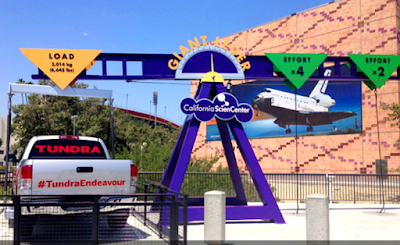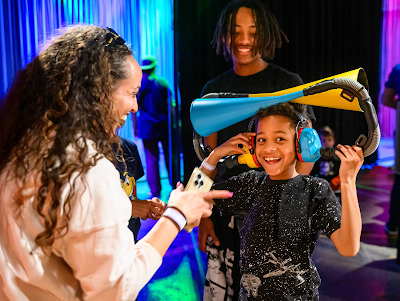Beyond Buttons, or How I Learned to Stop Worrying and Love the Analog.
I get it. You walk into a museum planning meeting and someone inevitably says, "What if we just put a touchscreen on it?" It's like the exhibition equivalent of putting bacon on everything – sure, it works, but sometimes you need to step back and remember that not every problem needs a digital solution.
Don't get me wrong, I'm not a Luddite. I'm typing this on a computer, after all (shocking, I know). But there's something enjoyably subversive about creating engaging, interactive experiences that don't require a single pixel, USB port, or software update.
The Case for Going Analog
There's something primal about physically manipulating objects. We're tactile creatures who spent thousands of years figuring out the world through our hands, not our fingertips on glass.
And here's the kicker: analog interactions are often more memorable. When was the last time you remembered a specific touchscreen interaction? Now think about the last time you turned a really satisfying crank or pulled a lever that made something dramatic happen.
Mechanical Marvels That Actually Work
The Mighty Lever System
Nothing says "I have the power!" like a good lever. Some museums have visitors lifting actual cars with giant levers. These exhibits demonstrate powerful mechanical principles that make visitors feel like they have superhuman strength. The key is making the payoff dramatic – don't just move a small weight, move something that makes people go "whoa."
Pro tip: A satisfying clunk when something locks into place is worth its weight in engagement metrics.
Gear Trains Tell Stories
Gears are visual poetry. They're also perfect for showing cause and effect, which is the holy grail of interactive design. Create a gear system where turning one element starts a chain reaction.
Maybe it's showing how a clock works, or how an appliance like a mixer operates. The trick is to make it detailed enough to be fascinating, simple enough to understand.
The Humble Crank
Never underestimate the power of a good crank. It's immediate, satisfying, and gives visitors a sense of control. Use it to power animations, reveal hidden information, or create sounds. The classic "crank a generator" component can power dazzling visual and physical effects, while allowing visitors to directly experience how their physical energy can transform into electrical energy.
Making It Work in the Real World
Durability is Key
If you're creating mechanical interactions, build them like tanks. Visitors will push, pull, crank, and manipulate your exhibits in ways you never imagined. Use materials that can handle abuse and design mechanisms that fail gracefully. A broken interactive exhibit is worse than no interactive exhibit.
Clear Instructions, Obvious Affordances
Make it immediately obvious what visitors should do. If it's meant to be turned, make it look turnable. If it's meant to be pushed, make it look pushable. Don't make people guess – confusion kills engagement faster than broken technology.
Maintenance Plans Matter
Mechanical doesn't mean maintenance-free. Create exhibits that can be easily cleaned, adjusted, and repaired by your existing staff. Document everything, and make replacement parts easy to source. Future museum employees will thank you.
The Secret Sauce: Emotional Payoff
The best analog interactions create emotional responses. The surprise of a hidden compartment opening. The dramatic moment when a lever lifts something heavy. Design for those moments of delight, frustration, and ultimate satisfaction.
Remember, you're not just creating an activity – you're creating an experience. The best analog interactions make visitors feel smart, powerful, or surprised. Sometimes all three.
The Bottom Line
In a world of endless screens and digital overload, analog interactions offer something refreshing: direct, immediate, tactile engagement with ideas. They're reliable, memorable, and often more engaging than their digital counterparts. Plus, they won't become obsolete when the next operating system update drops.
So the next time someone suggests "just adding a touchscreen," take a deep breath and consider the alternatives. Sometimes the best way forward is backwards – or sideways, with a really good crank!
Paul Orselli writes the posts on ExhibiTricks. Paul likes to combine interesting people, ideas, and materials to make exhibits (and entire museums!) with his company POW! (Paul Orselli Workshop, Inc.) Let's work on a project together!
If you enjoy the blog, you can help keep it free to read and free from ads by supporting ExhibiTricks through our PayPal "Tip Jar"






No comments:
Post a Comment